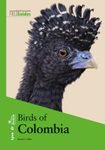Essential reference to an important group
By
Gehan de Silva Wijeyeratne
29 Nov 2019
Written for Hardback
The mammals classified as Hoofed Mammals include some of the most familiar, economically important and iconic mammals in the world. The familiar and economically important sheep, cattle and horses and the iconic elephants are amongst them. These mammals also have a long historical association with people. They can also strike fear and awe. If you have ever been at the receiving end of a charge by a buffalo or elephant you will understand this well. For the serious wildlife enthusiast who wants a lot of useful information brought together into a single book, Volume 2 in the Handbook of the Mammals of the World is an invaluable reference. Like every volume in the series, it is an Aladdin’s Cave of information. It is a multi-author work; an international collaboration with 29 authors. Each volume is a Herculean task brought together by a sizeable editorial and administrative team. The completion of the series will mark a significant milestone in the history of zoological literature. Skilful editing has resulted in a book that reads as a coherent whole and the book follows the general format set for the series with the first volume.
Each scientific order of mammals is preceded by an introduction which begins with a text box that has summary information such as the number of genera and species. A useful map allows a quick visual overview of the distribution of the mammals. For example, it is easy to see that the Aardvark, an order with just one species, is widely distributed across Sub-Saharan Africa. The introduction follows standard headings such as Systematics, Morphological Aspects, Habitat, General Habits, Communication, Food and Feeding, Movements, Home Range and Social Organisation, Relationship with Humans, Status and Conservation followed by a general bibliography. They vary in length and not surprisingly, families such as elephants have a longer introduction at 25 pages. These introductions are very well written and will be an absorbing introduction to anyone travelling out of their own country and encountering a family of mammals that is new to them. The family introductions are densely packed with information but yet written in an accessible style and do not come across as textbook English. The introduction is liberally illustrated with stunning images and captioned intelligently. One of my favourite images is that of the tip of the trunk of an Asian Elephant grasping a cluster of leaves with the caption explaining it as one of the most sensitive organs found in a mammal. I have spent hundreds of hours photographing elephants and I have never managed to capture an image that shows this so well. The excellent family introductions are followed by the species accounts which follow a field guide style with text facing illustrated plates. The text accompanying the ‘plates’ is in smaller font and the text is more telegraphic in style and intended for reference. The text follows a standard style beginning with Taxonomy, followed by other sections such as Distribution, Habitat, Movements, Home Range and Social Organisation. These sections will differ in appeal to people.
The volume covers six orders of mammals. The Aardvarks (1 species), Hyraxes (5 species), Elephants (3 species) and Pangolins (8 species) are orders with just one family within the order. Therefore, four of the six orders comprise a mere 17 species. However, the two orders Perissodactyla and Artiodactyla include a significant number of species making up the bulk of the book (pages 82 to 809). The perissodactyls or odd-toed ungulates comprise three families. The horses, rhinoceroses and the tapirs. The artiodactyls or even-toed ungulates comprise 9 families. These are the camels, pigs, peccaries, hippopotamuses, chevrotains, musk-deer, deer, bovines (Hollow-horned Ruminants), pronghorn, giraffes and okapi. With the exception of families such as the chevrotains, I suspect almost all of these families are known to almost any city dweller who has access to wildlife documentaries on television or has visited a zoo.
The book puts the large format (310 × 240 mm) to good use with some images adorning a full page. Another stunning example being the Günther’s dik-dik adorning a full page with a raised crest of hairs. I was immediately reminded of the parallel with birds and reptiles that may raise a crest in courtship or threat display. Whether it is to learn that all dik-diks have this crest of hairs or that bovines doze rather than ‘deep-sleep’ to be in a posture that enables digestion, there appears to be something new to learn in every paragraph. I have taken many images of Axis or Spotted Deer bounding away in national parks in Sri Lanka. Browsing the picture captions of a deer bounding away I gather that deer that bound away fall into the group of ‘saltatorial’ species living in enclosed habitats as opposed to ‘cursorial species’ living in open habitats. I had not thought of grouping deer like that before and one of the pleasures of a book like this is that it provides new ways in which to reflect on field observations. Other images illustrate how some deer use antorbital glands to mark trees and bushes. Wildlife photographers interested in recording behaviour will find plenty of useful insights on what to be alert to in the field.
The 56 plates by Toni Llobet are to a very high standard. They are accurate, capture the jizz and are photo-realistic. One can almost feel the fur on the dik-diks. Where necessary, subspecies are illustrated, such as with the Plains Zebra where 6 subspecies are illustrated. The gleaming images are crisp and look like they have been photoshopped out of photographs. When the series is completed the whole collection of plates will represent one of the most ambitious projects in zoological illustration.
Not all hoofed mammals are as charismatic as elephants, horses and rhinoceroses or emblematic of safari as with zebras and giraffes. But they are a deeply familiar group of mammals with a long historical relationship with humans and a group that is familiar to everyone one from childhood; perhaps even with a troublesome interloper if you are European householder in the countryside whose prized plants are being eaten away by introduced muntjac which have established feral populations. Whatever your take on the group of mammals, this is a fascinating book if you want to learn more than the space constraints allowed in a portable field guide. Although science does not stand still, it is also an important book which serves as a starting point for any serious zoologist to gain an overview on what is already known.
1 of 1 found this helpful
-
Was this helpful to you? Yes No






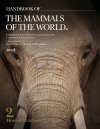






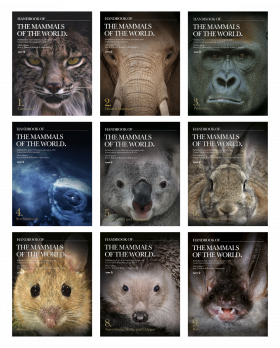




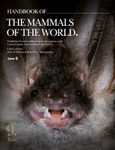







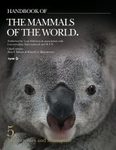





![How to Find and Identify Mammals [Revised Edition]](http://mediacdn.nhbs.com/jackets/jackets_resizer_medium/21/210208.jpg?height=150&width=106)














